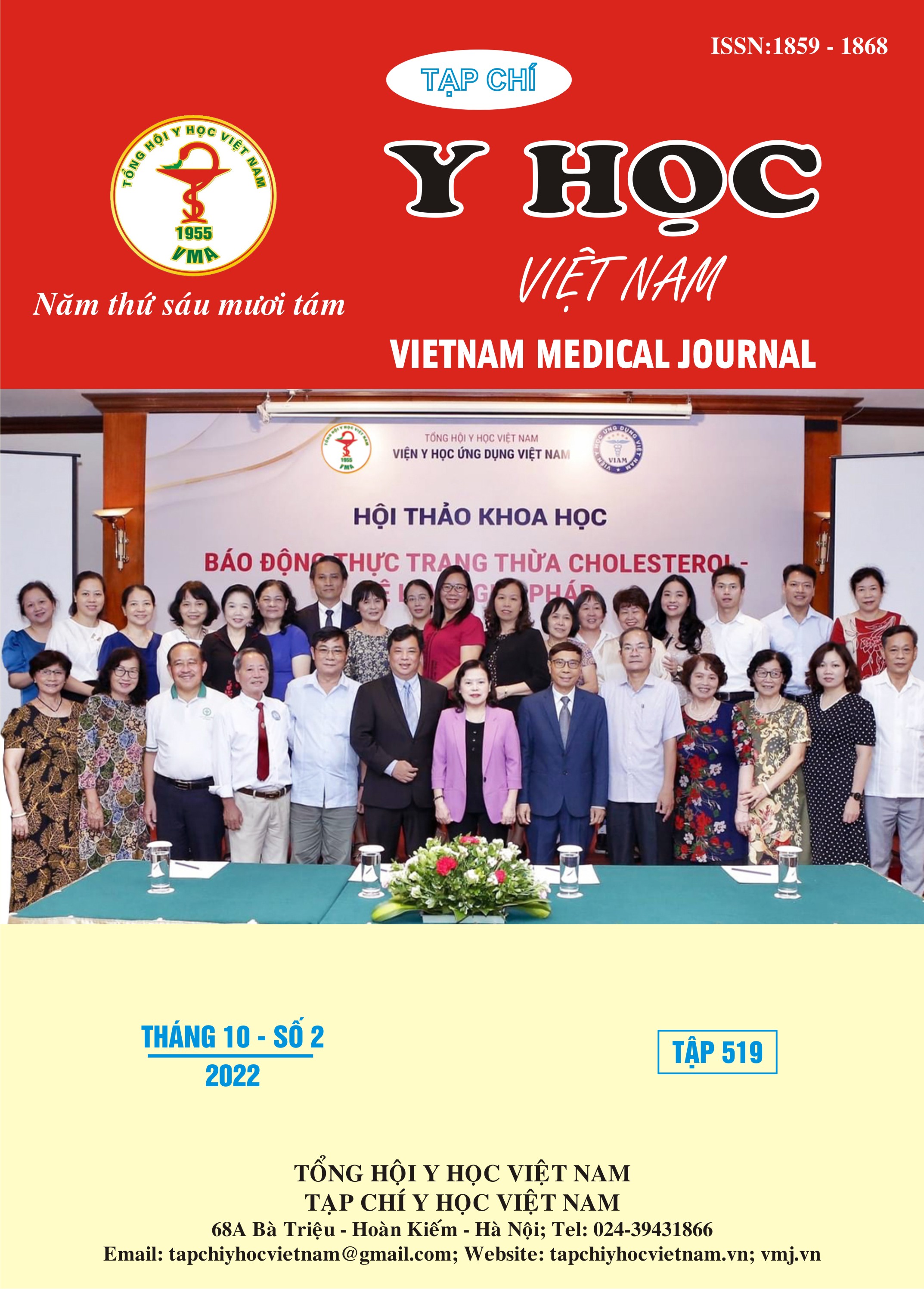STUDYING HEMODYNAMIC CHARACTERISTICS MEASURED BY PICCO SYSTEM IN PATIENTS WITH CARDIOGENIC SHOCK DUE TO MYOCARDIAL INFARTION AT PHU THO GENERAL HOSPITAL
Main Article Content
Abstract
Objectives: Studying hemodynamic characteristics measured by PiCCO system in patients with cardiogenic shock due to myocardial infartion at Phu Tho general hospital. Subjects and methods: Longitudinal prospective study 45 patients with cardiogenic shock due to myocardial infartion treated at Phu Tho general hospital from 02/2019 to 12/2021. Results: Male patients had proportion 66,7%, mean age is 65,5±12,4 (from 39 – 92 years old). Mortality is 46,7%. There are no statistically significant difference in global end diastolic volume index. There are statistically significant difference in nonsurvival group and survival group about cardiac index. Systemic vascular resistance index, extravascular lung water index and pulmonary vascular permeability index are no statistically significant difference in first 6 hours, but in next stages 12 hours, 48 hours and 72 hours there are statistically significant difference in nonsurvival group and survival group. Conclusion: In patients with cardiogenic shock due to myocardial infartion, increasing cardiac index and decreasing systemic vascular resistance index, extravascular lung water index and pulmonary vascular permeability index statiscally significant increase the survival rate. Extravascular lung water index has a predictive value in mortality in patients with cardiogenic shock due to myocardial infartion.
Article Details
Keywords
cardiogenic shock, myocardial infarction, hemodynamic, PiCCO
References
2. Thiele H, Zeymer U, Neumann FJ. et al (2012), “IABPSHOCK II Trial Investigators. Intraaortic balloon support for myocardial infarction with cardiogenic shock”, N Engl J Med, 367:1287–1296.
3. Thiele H, Allam B, Chatellier G. et al (2010), “Shock in acute myocardial infarction: the Cape Horn for trials?”, Eur Heart J 2010;31:1828–1835.
4. Isakow W, Schuster DP. et al (2006), “Extravascular lung water measurements and hemodynamic monitoring in the critically ill: bedside alternatives to the pulmonary artery catheter”. Am J Physiol Lung Cell Mol Physiol; 291(6): L1118-31
5. Thiele H, Ohman EM, de Waha-Thiele. et al (2019), “Management of cardiogenic shock complicating myocardial infarction: an update 2019”. Eur Heart J;40(32):2671-2683.
6. Assali, Abid R.; Iakobishvili, Zaza; Zafrir, et al (2005). “Characteristics and clinical outcomes of patients with cardiogenic shock complicating acute myocardial infarction treated by emergent coronary angioplasty”. Acute Cardiac Care, 7(4), 193–198.
7. Lee EP, Hsia SH, Lin JJ et al. “Hemodynamic Analysis of Pediatric Septic Shock and Cardiogenic Shock Using Transpulmonary Thermodilution”.
8. Sakka, Samir G.; Klein, Magdalena; Reinhart, Konrad et al (2002). “Prognostic Value of Extravascular Lung Water in Critically Ill Patients”. Chest, 122(6), 2080–2086.


